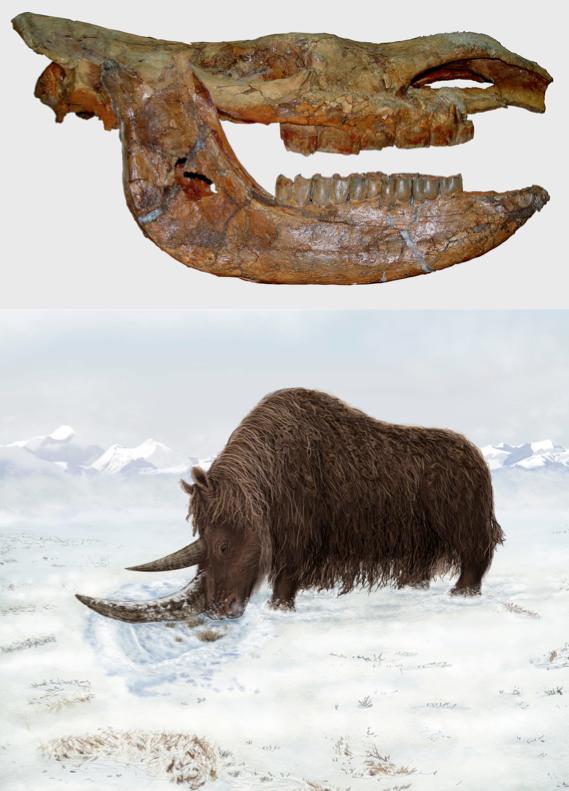Please note: Osher Rainforest will be closed for maintenance Jan. 14–16.
Science News
Origins of the Woolly Rhino
September 6, 2011

Scientists love to study extinctions. For example, the extinction of Ice Age giants such as woolly mammoths and rhinos, giant sloths and saber-tooth cats is widely studied, but much less is known about where these giants came from and how they acquired their adaptations for living in such a cold environment.
But a team of international researchers is beginning to explain these origins. A new paper, published in the journal Science, reveals the discovery of a primitive woolly rhino fossil in the Himalayas which suggests that some giant mammals first evolved in present-day Tibet well before the beginning of the Ice Age.
The researchers uncovered a complete skull and lower jaw of a new species of woolly rhino (Coelodonta thibetana) in 2007, in the Himalayan foothills in the southwestern Tibetan Plateau. The new rhino is 3.6 million years old, much older and more primitive than its Ice Age descendants in the mammoth steppes across much of Europe and Asia. The extinct animal had developed special adaptations for sweeping snow using its flattened horn to reveal vegetation, a useful behavior for survival in the harsh Tibetan climate.
These rhinos lived at a time when global climate was much warmer and the northern continents were free of the massive ice sheets seen in the Ice Age later. The rhino accustomed itself to cold conditions in high elevations and became pre-adapted for the future Ice Age climate. When the Ice Age eventually arrived around 2.6 million years ago, the new paper posits, the cold-loving rhinos simply descended from the high mountains and began to expand throughout northern Asia and Europe.
In addition to the new woolly rhino, the paleontologists also uncovered extinct species of three-toed horse (Hipparion), Tibetan bharal (Pseudois, also known as blue sheep), chiru (Pantholops, also known as Tibetan antelope), snow leopard (Uncia), badger (Meles), as well as 23 other kinds of mammals.
In other words, the Tibetan Plateau may have been a cradle of the Ice Age giants. As NPR reports:
When the rest of the world eventually iced up, they moved out of Tibet and took over.
And perhaps there are more evolving stories awaiting discovery in the area. “Cold places, such as Tibet, Arctic, and Antarctic, are where the most unexpected discoveries will be made in the future—these are the remaining frontiers that are still largely unexplored,” says study co-author Xiaoming Wang, of the Natural History Museum of Los Angeles County.
Image courtesy of Natural History Museum of Los Angeles County